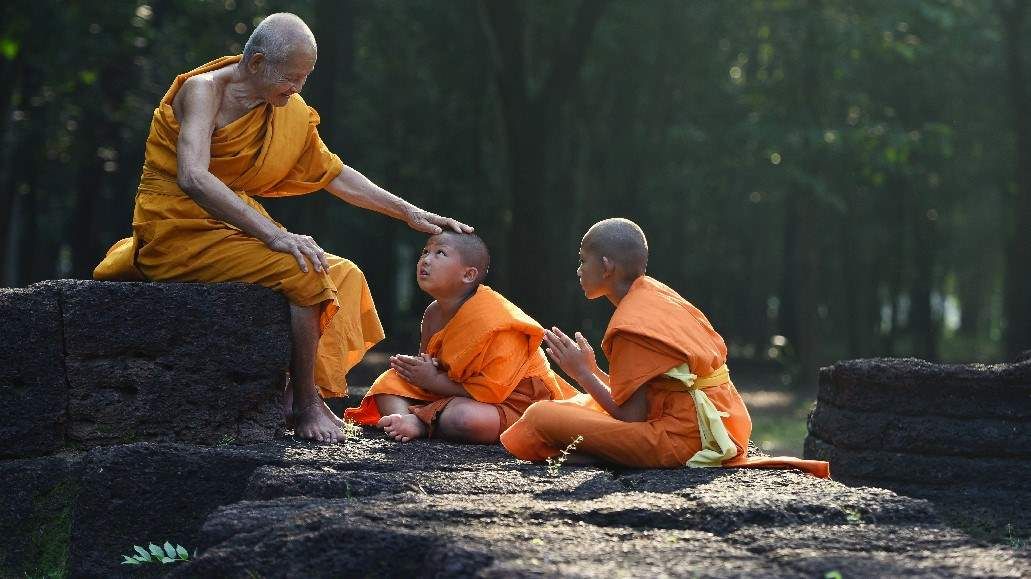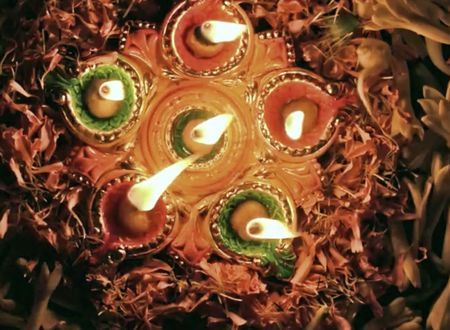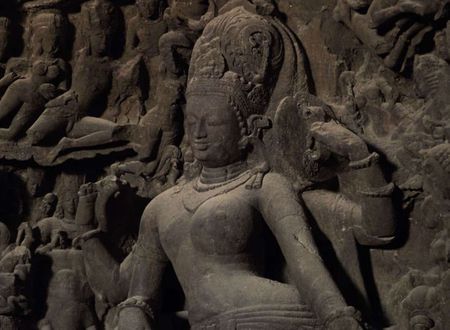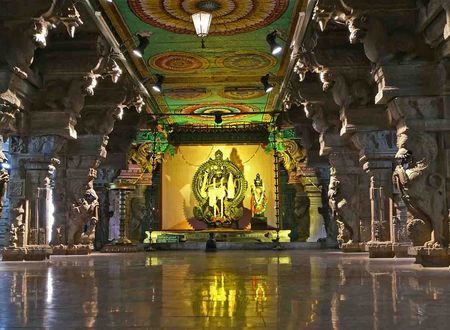A very loud part of the social discourse today blames Christianity and Islam for mass conversions and worse forced conversions . History bears testimony , that these conversions of entire people and nations was done on the point of sword in certain cases and through the lure of a better life in the more modern times . It is often quoted that no such forced conversions or mass conversions took place in Sanatana Dharma . This however is debatable. Instead of swords or gold or the promise of a better life – it was cool logic , knowledge and analytics in ardently fought shastratha (phonetic- Shastra-artha meaning the meaning or interpretation of Scriptures ) amongst different schools of thought that made the Sanatana Dharma evolve and effected mass conversions to the winning school of thought. The debate was centered on who interpreted the scriptures better and could logically explain the entire construct .Not a drop of blood was split . Adi Shankara first conquered the country through his advaita philosophy .Then came a strong pushback to that in the form of Madhavacharya . Madhava challenged adavita and what was called Mayavada ( the world is an illusion . The only truth being the Divine and our one- ness with him ) with Tattva-vada ( Philosophy rooted in reality). Those days- the Kings were the patrons and guardians of religion and religious thought. The school of thought followed by the King was the school accepted by the masses – hence when a scholar such as Madhava defeated the court scholar following a different school – the entire kingdom converted instantly to Bhakti and Tattavavada without any loud protests .
So,how did Vasudeva become Poorna Pragnya and then Madhava and how did he conquer the hearts and minds across India ? Read on to know the story of whats called Sri Madhav Vijay or the victory of Madhava. You can read Part1 here
Out from the Gurukul- Vasudeva announced to his parents his intent to take Sannayasa (become a renunciate). As he was the only son – born after years of prayers – Madhyageha and Vedvati were very distressed and pained . They refused to let him go . The battle of wits went on for sometime. Vasudeva on noting their distress, at this decision, promised to wait until another son was born to them. He got restless soon thereafter and it is said he himself blessed his parents to have another son .Finally, at the age of eleven, upon the birth of a younger brother (who many years later joined his order as Vishnu Tîrtha) he was ordained into Sannyasa and was given the name Poorna Pragnya (literal meaning- Completely Enlightened) by his guru Achyutapreksha Tîrtha. Madhava had served Achuyutpreksha in the Ananteshwar temple for a year prior to his deeksha(initiation).
Normally , In the Eastern tradition , the shishyas or the disciples don’t even dream of challenging their Guru . Its almost blasphemous to do so but none of this stopped the fierce and independent spirit of the young disciple Poorna Pragnya .
When his guru attempted to educate him, young Vasudeva surprised the guru by his analysis and erudition. Vasudeva challenged his Guru a number of times. It is said that when his guru tried to teach him the noted Advaita text Ishhta-Siddhi, he pointed out, to Achyutapreksha’s amazement, that there were 30 errors in the very first line of that work. He reasoned out the errors with such sharp logic that there was doubt left in anyone’s mind. This immediately built for him immense respect in the eyes of the Guru and fellow students .To Achyutpreksha’s credit he wasn’t miffed by his disciple challenging him or proposing his own designs . He encouraged independent enquiry .
Once he was asked to repeat the prose-passages of the Fifth Skandha of Bhagavat—a crucial test to find out the depth of his knowledge—and to everyone’s surprise, Poorna Pragnya repeated the text, page after page with perfect accuracy. Achyutapreksha soon gave up trying to educate Poorna Pragnya, and himself became a disciple of his own disciple !Poorna Pragnya was then made the head of the institution and he continued his teachings. Well-trained pundits and laymen alike gathered in large numbers to listen to his interpretations of the scriptures.
During one such occasion, he debated Pandit Vasudev, a famous Advaita scholar for 40 days and won the debate. That is when he got the name Ananda Tirtha. He later assumed the name Madhva by which he is most commonly known today. It is said the words Ananda Tirtha and Madhva are synonymous. Both mean, “one who creates knowledge that brings happiness.” Many scholars of other schools came to him for debate and went back defeated by his keen and irrefutable logic.
Madhva started preaching his own philosophy according to which the world is real, the individual souls are different from Brahman, and Sri Hari is the highest entity in the Universe. Madhvacharya advocated dualism and realism. His philosophy accepts panchabhedas or five kinds of bhedas (differences) which are real and permanent. They are:
- Ishvara or God is different from the jivas or living sentient souls;
- He is also different from the jada (insentient nature, prakrti);
- the various jivas or souls are different from one another;
- the jivas are different from the jada; (insentient things)
- the various objects which are jada, are also different from one another.
- He accepts God, called Narayana or Vishnu or SriHari, as the Supreme Being and the others as dependent realities. Mukti or liberation, which is regaining one’s blissful true nature can be achieved only through bhakti He used three methods to prove his philosophy, namely personal experience (pratyaksha), scriptures (agamas) and inference (anumana).
To spread his thoughts and propagate his philosophy he toured many kingdoms in south India Vishnumangalam (near Kasargod), Trivandrum, Kanyakumari, Rameshwaram, Srirangam and a few other sacred places. Everywhere he went, he humbled scholars from other schools of thought with his undisputed and sharp analysis and brilliant oratory.
Once in the assembly of scholars, a discussion on the topic “Ithareya Sooktartha” was being held in the Sriranga temple. Madhvacharya propounded that the Vedas had three meanings, Mahabharat, ten and Vishnu Sahasranam, hundred. There were differing opinions about it and to quell doubts, he began narrating hundred meanings in his interpretation for the word ‘Vishwa’ (the first word of the famed Vishnu Sahasranama- the dhyana shloka) backed by grammatical illustrations. Even the most qualified and respected scholars in the audience found it impossible to refute and accepted his deep knowledge.
Kingdom after Kingdom accepted his thoughts and principles giving up the tenets of advaita in certain cases .Soon after returning from his pilgrimage he wrote the Gita Bhashya – a commentary on the Bhagvadgita . Madhava felt very strongly that the vedic scriptures were being misrepresented and a very objective and dispassionate study of the same is needed. He harboured a deep desire to get Mahrishi Ved Vyasa’s blessings for this mammoth task . Yes, the same Vyasa who authored the Mahabharata in Dwapara Yuga . And nobody could stop him when he decided to undertake a pilgrimage to Sri Badrika -kshetra to search for the elusive immortal Vyasa. Did he find his idol? Take a guess
To be continued
PS: Comprehensive list of references to be provided at the end of the series .









Comments & Discussion
6 COMMENTS
Please login to read members' comments and participate in the discussion.